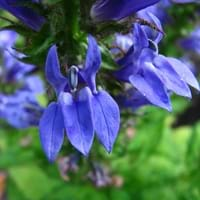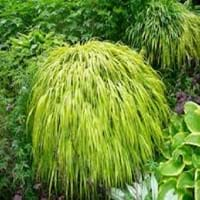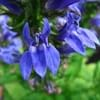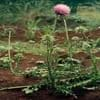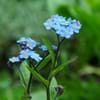Life Span
Annual
Perennial
Type
Flowering Plants, Shrubs
Grass
Types
Lobelia aberdarica, Lobelia leschenaultiana, Lobelia canbyi
Not Available
Number of Varieties
Not Available
Habitat
Open areas, River side, Woods
meadows, Riverbanks, Wet Woods
USDA Hardiness Zone
4-9
5-9
Sunset Zone
A1, A2, A3, H1, H2, 1a, 1b, 2a, 2b, 3a, 3b, 4, 5, 6, 7, 8, 9, 10, 11, 12, 13, 14, 15, 16, 17, 18, 19, 20, 21, 22, 23, 24
1a, 1b, 2a, 2b, 3a, 3b, 4, 5, 6, 7, 8, 9, 10, 11, 12, 13, 14, 15, 16, 17, 18, 19, 20, 21, 22, 23, 24
Habit
Cushion/Mound-forming
Clump-Forming
Flower Color
Blue, Red, Violet, White
Blue Violet
Flower Color Modifier
Bicolor
Bicolor
Fruit Color
Not Available
Purple
Leaf Color in Spring
Dark Green
Yellow, Green, Light Green
Leaf Color in Summer
Green
Light Green
Leaf Color in Fall
Green
Orange, Yellow green, Orange Red
Leaf Color in Winter
Not Available
Green, Dark Green, Not Available
Leaf Shape
Cushion
Oblovate
Plant Season
Fall, Summer
Spring, Summer, Fall
Sunlight
Full Sun, Partial shade
Full Sun, Partial Sun, Partial shade
Type of Soil
Well drained
Loam
The pH of Soil
Acidic
Acidic, Neutral
Soil Drainage
Well drained
Well drained
Bloom Time
Early Fall, Early Summer, Late Summer, Mid fall, Mid Spring
Late Summer, Early Fall, Fall
Tolerances
Not Available
Dry soil, Shallow soil
Where to Plant?
Container, Ground, Pot
Ground
How to Plant?
Seedlings
From Rhizomes
Plant Maintenance
Medium
Medium
Watering Requirements
Form a Soil ring to water efficiently, Prefer drip-irrigation instead of Over-head watering, Requires watering in the growing season, Use Mulches to help prevent water loss during hot and windy weather, Water twice a day in the initial period
Keep ground moist
In Summer
Lots of watering
Lots of watering
In Spring
Moderate
Consistently
In Winter
Average Water
Adequately
Soil pH
Acidic
Acidic, Neutral
Soil Type
Well drained
Loam
Soil Drainage Capacity
Well drained
Well drained
Sun Exposure
Full Sun, Partial shade
Full Sun, Partial Sun, Partial shade
Pruning
Cut or pinch the stems, Prune after flowering, Prune to control growth, Remove dead or diseased plant parts, Remove deadheads
Prune grass to maintain level, Prune if you want to improve plant shape
Fertilizers
All-Purpose Liquid Fertilizer
organic fertlizers
Pests and Diseases
Botrytis Blight, Crown rot, Pythium rot, Stem spot
Not Available
Plant Tolerance
Drought
Shade areas, Shallow soil, Wet Site
Flowers
Yes
Insignificant
Flower Petal Number
Single
Single
Foliage Texture
Fine
Medium
Foliage Sheen
Matte
Matte
Attracts
Birds, Hummingbirds
Ants, Beetles, Caterpillar
Allergy
coma, convulsions, Diarrhea, exhaustion, Nausea, salivation, Vomiting, weakness
allergic conjunctivitis, Asthma, Rash
Aesthetic Uses
Beautification, Bouquets, Showy Purposes, Used for decorating walls, fences, gates, hedges, etc.
Beautification, Ground Cover
Beauty Benefits
Not Available
Not Available
Environmental Uses
Air purification
Provides ground cover, Shadow Tree
Medicinal Uses
Asthma, Bronchitis, Croup
Acne, Aging, Laxative
Part of Plant Used
Leaves, Seeds
Leaves
Other Uses
Showy Purposes
Can be made into a herbal tea, Showy Purposes
Used As Indoor Plant
Yes
Sometimes
Used As Outdoor Plant
Yes
Yes
Garden Design
Bedding Plant, Bog Garden, Edging, Foundation, Hanging Basket, Houseplant, Mixed Border, Rock Garden / Wall
Container, Edging, Mixed Border, Rock Garden / Wall, Water Gardens
Botanical Name
Lobelia laxiflora
HAKONECHLOA macra 'Aureola'
Common Name
Lobelia
Golden Japanese Forest Grass, Hakone Grass
In Hindi
Lobelia
जापानी वन घास
In German
Lobelie
Japanische gras
In French
Lobelia
Forêt herbe japonaise
In Spanish
Lobelia
forestales hierba japonesa
In Greek
λοβηλία
Ιαπωνικά γρασίδι δάσος
In Portuguese
Lobélia
floresta grama japonês
In Polish
Lobelia
Japoński las lato
In Latin
Lobelia
Forest gramina Italica
Phylum
Anthophyta
Angiosperms
Class
Dicotyledonae
Monocots
Family
Campanulaceae
Poaceae
Genus
Lobelia
Hachanechloa
Clade
Angiosperms, Asterids, Eudicots
Angiosperms
Tribe
Not Available
Not Available
Subfamily
Lobelioideae
Arundinariinae
Number of Species
Not Available
Importance of Lobelia and Japanese Forest Grass
Want to have the most appropriate plant for your garden? You might want to know the importance of Lobelia and Japanese Forest Grass. Basically, these two plants vary in many aspects. Compare Lobelia and Japanese Forest Grass as they differ in many characteristics such as their life, care, benefits, facts, etc. Every gardener must at least have the slightest clue about the plants he wants to plant in his garden. Compare their benefits, which differ in many ways like facts and uses. The medicinal use of Lobelia is Asthma, Bronchitis and Croup whereas of Japanese Forest Grass is Acne, Aging and Laxative. Lobelia has beauty benefits as follows: Not Available while Japanese Forest Grass has beauty benefits as follows: Not Available.
Compare Facts of Lobelia vs Japanese Forest Grass
How to choose the best garden plant for your garden depending upon its facts? Here garden plant comparison will help you to solve this query. Compare the facts of Lobelia vs Japanese Forest Grass and know which one to choose. As garden plants have benefits and other uses, allergy is also a major drawback of plants for some people. Allergic reactions of Lobelia are coma, convulsions, Diarrhea, exhaustion, Nausea, salivation, Vomiting and weakness whereas of Japanese Forest Grass have allergic conjunctivitis, Asthma and Rash respectively. Having a fruit bearing plant in your garden can be a plus point of your garden. Lobelia has no showy fruits and Japanese Forest Grass has no showy fruits. Also Lobelia is flowering and Japanese Forest Grass is not flowering . You can compare Lobelia and Japanese Forest Grass facts and facts of other plants too.
